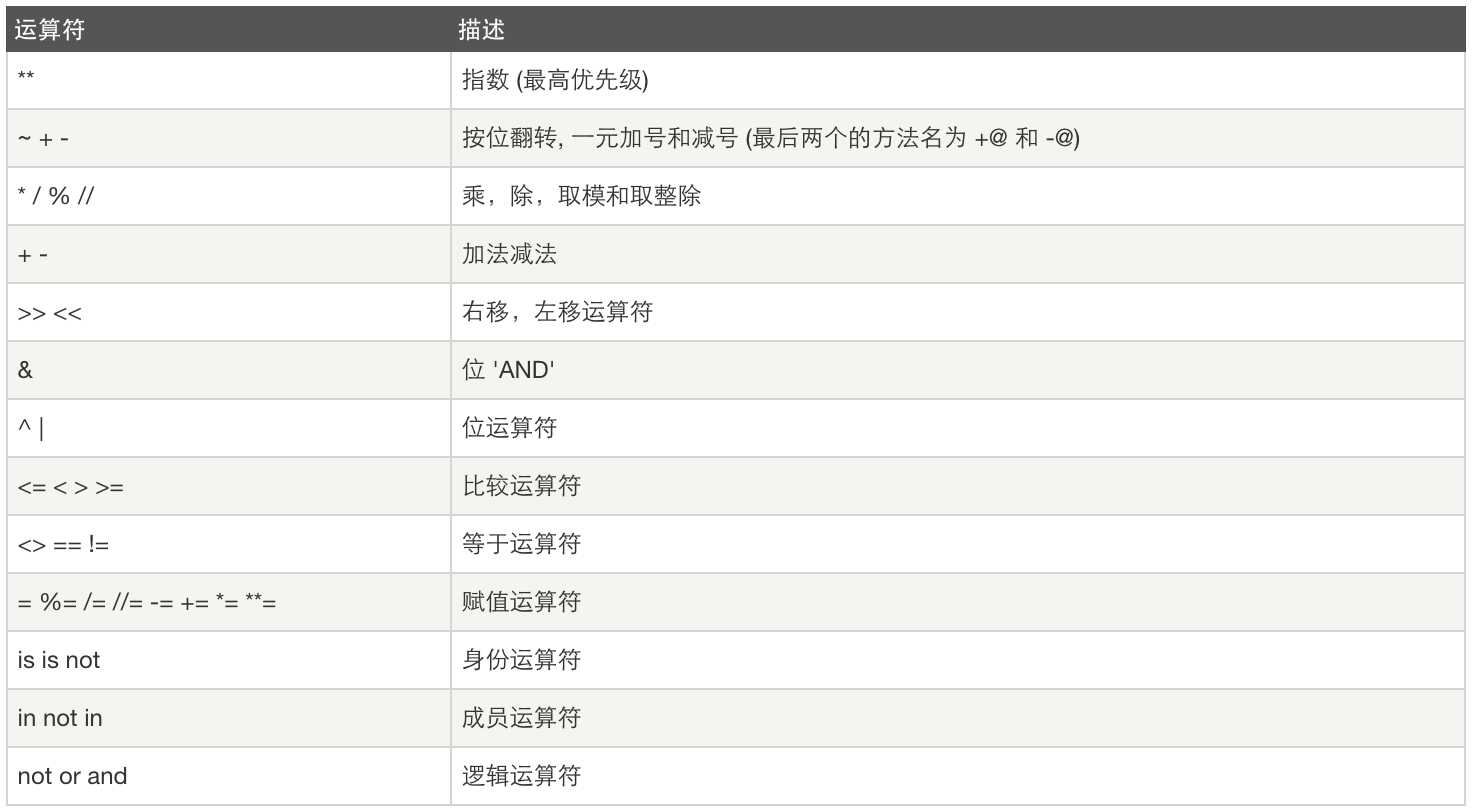运算符优先级

元组:只能创建和查,不能修改(方法:count 、 index)
列表: 增、删、改、查、索引、切片(方法:append、insert、pop、del、index、len)
列表扩展:
>>> names [‘Alex‘, ‘Tenglan‘, ‘Rain‘, ‘Tom‘, ‘Amy‘] >>> b = [1,2,3] >>> names.extend(b) >>> names [‘Alex‘, ‘Tenglan‘, ‘Rain‘, ‘Tom‘, ‘Amy‘, 1, 2, 3]
字典(无序):增、删、改、查、索引(方法:get、clear、popitem)
#setdefault(字典中有就不变,没有就添加)
>>> info.setdefault("stu1106","Alex")
‘Alex‘
>>> info
{‘stu1102‘: ‘LongZe Luola‘, ‘stu1103‘: ‘XiaoZe‘, ‘stu1106‘: ‘Alex‘}
#update
>>> info
{‘stu1102‘: ‘LongZe Luola‘, ‘stu1103‘: ‘XiaoZe‘, ‘stu1106‘: ‘Alex‘}
>>> b = {1:2,3:4, "stu1102":"bala"}
>>> info.update(b)
>>> info
{‘stu1102‘: ‘bala‘, 1: 2, 3: 4, ‘stu1103‘: ‘XiaoZe‘, ‘stu1106‘: ‘Alex‘}
#通过一个列表生成默认dict,有个没办法解释的坑,少用吧这个
>>> dict.fromkeys([1,2,3],‘testd‘)
{1: ‘testd‘, 2: ‘testd‘, 3: ‘testd‘}
enumerate用法:
for index,item in enumerate(proc_name):
index ----> 下标
item ------> 元素
标签:content usr 操作 计算机 span div 元组 方法 keyword
原文地址:http://www.cnblogs.com/sshcy/p/7780502.html